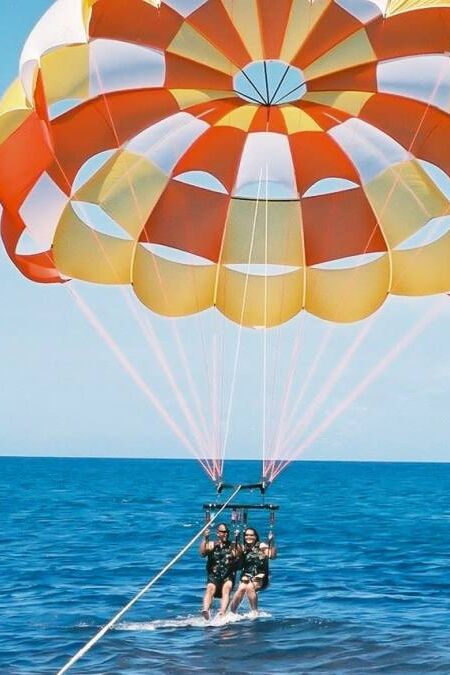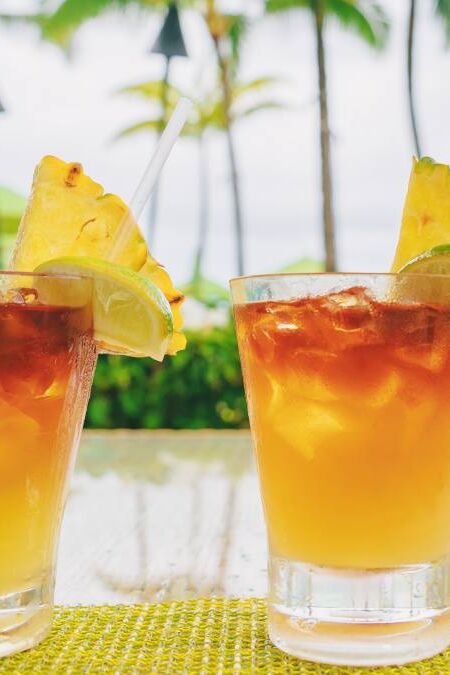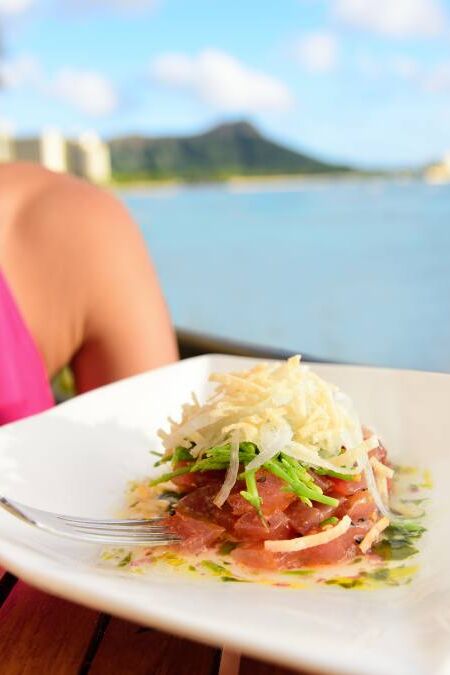Surfing, or “Heʻe nalu” in Hawaiian, holds a significant place in the culture and history of Hawaii. The sport was born in the Polynesian Islands and was later popularized in Waikiki. Over time, the sport transitioned from a common pastime to a tourist attraction. As the rhythmic sound of breaking waves beckons, more and more enthusiasts are drawn to the sport, eager to experience the joy of gliding on the ocean’s surface. In this beginner’s guide, we will provide valuable insights and practical advice tailored to those taking their first steps into this exhilarating world.
Why Waikiki is Perfect for Beginners
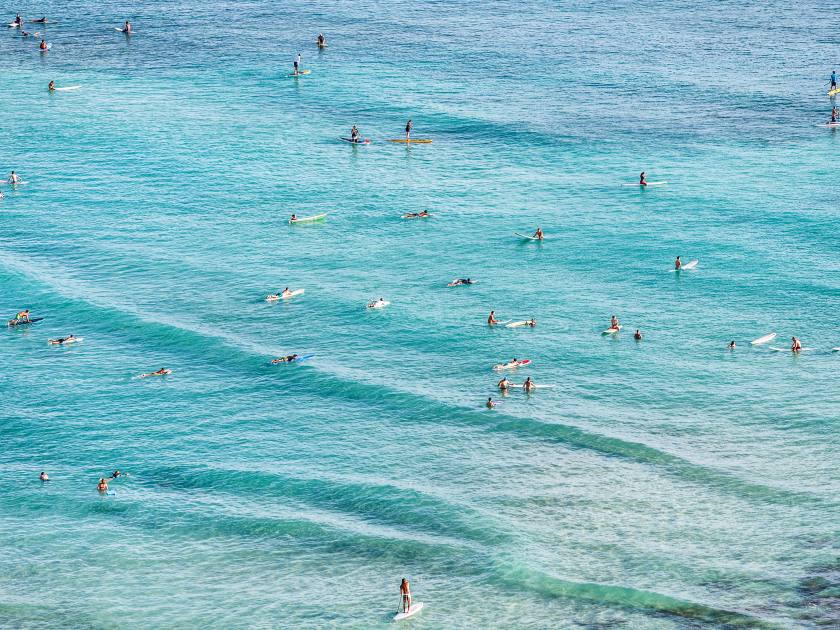
Waikiki offers some of the world’s most favorable surfing conditions, making it a paradise for both beginners and seasoned surfers. The waves in Waikiki are renowned for their long, rolling break, which gives surfers ample time to stand up on their boards and enjoy a lengthy ride. The reefs that lie beneath the surface play a significant role in shaping these perfect waves, as they cause incoming swell to break gently and uniformly, thereby reducing the risk of wipeouts. The sandy ocean floor enhances safety for beginners, while the presence of qualified surf instructors and a vibrant surf culture further solidify Waikiki’s reputation as an ideal destination for novice surfers. Choosing Waikiki ensures a supportive and nurturing environment for everyone to build their skills and confidence in the art of surfing.
Basics of Surfing
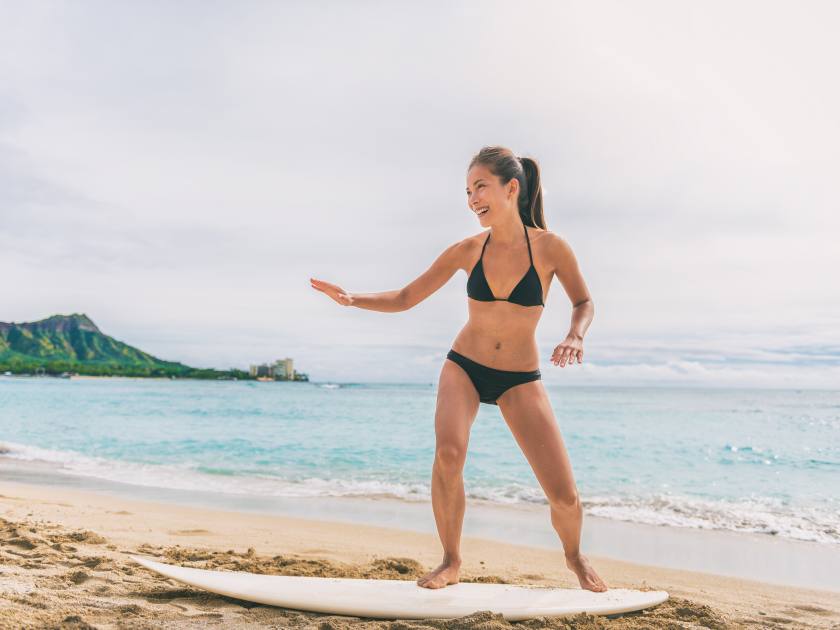
Surfing Equipment for Beginners
As beginners set foot into the world of surfing, understanding the essential equipment is paramount to a successful and enjoyable experience. Surfboards, available in various types and sizes, play a pivotal role in shaping the learning curve. Complementing this, essential surfing gear includes a leash to keep the board tethered, wax for traction, and a rash guard for protection against the elements, ensuring a well-rounded and secure surfing setup for beginners.
Understanding Ocean Conditions
Navigating the ocean’s dynamic conditions is a fundamental aspect of surfing, especially for those embarking on their journey in Waikiki. Awareness of tides and waves is crucial, as Waikiki’s beaches offer diverse wave patterns influenced by the shifting tides. Understanding the ebb and flow of the ocean allows beginners to position themselves strategically, enhancing their ability to catch waves. Moreover, recognizing the significance of weather conditions, such as wind and swell direction, provides valuable insights into the overall surfing experience, contributing to safer and more enjoyable sessions.
Surfing Etiquette and Safety
Surfing is not only about riding waves but also about fostering a sense of community and respecting the ocean environment. Surfing etiquette plays a pivotal role in creating a harmonious atmosphere among surfers. This includes showing respect for fellow surfers by taking turns and avoiding disruptive behaviors in the lineup. Additionally, adhering to beach rules is essential for maintaining order and safety. Basic water safety tips for beginners, such as being mindful of rip currents, understanding wave patterns, and prioritizing personal safety, further contribute to a positive and secure surfing experience for everyone involved.
Choosing the Right Surfboard
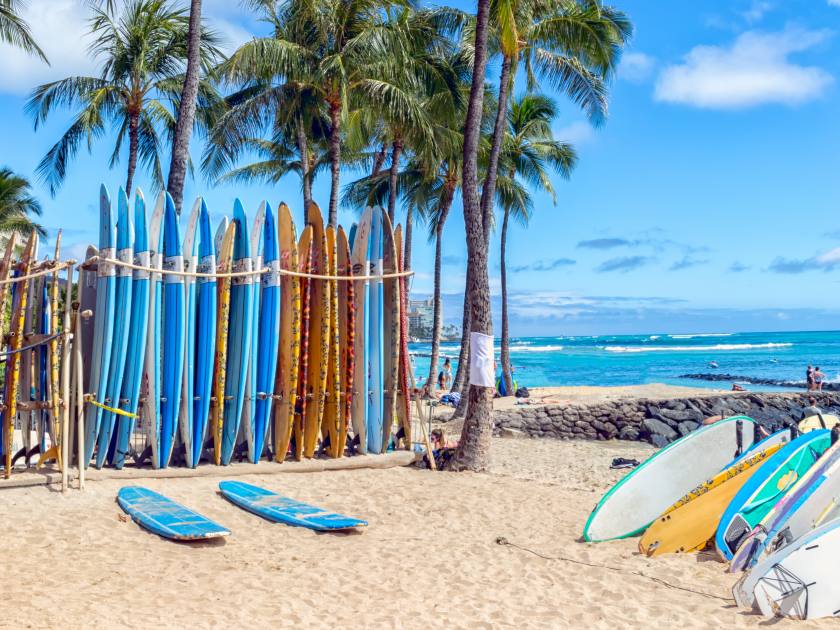
Picking the right surfboard is crucial. There are various types of surfboards, each with its characteristics and suitability for different skill levels.
- Longboards: Ideal for beginners, longboards offer great stability and are easier to paddle and stand up on, making them perfect for learning the basic skills required in surfing.
- Foamboards: Also known as soft tops, these are generally considered the best surfboards for beginners. They are buoyant, stable, and softer than traditional surfboards, reducing the risk of injury during the learning process.
- Funboards: These are a hybrid of longboards and shortboards. They provide a good balance between stability and maneuverability, making them another suitable option for beginners.
Specialty Surf Shops in Waikiki
Waikiki is home to several specialist surf shops that offer a wide range of surfboards suitable for beginners. Places like “Hawaiian South Shore” and “Big Wave Dave Surf & Coffee” not only provide various surfboard options, but they also offer expert advice to help you choose the right board. These stores also offer essential surf accessories and gear, ensuring you’re well-equipped for your surfing adventure.
What to Expect as a Beginner
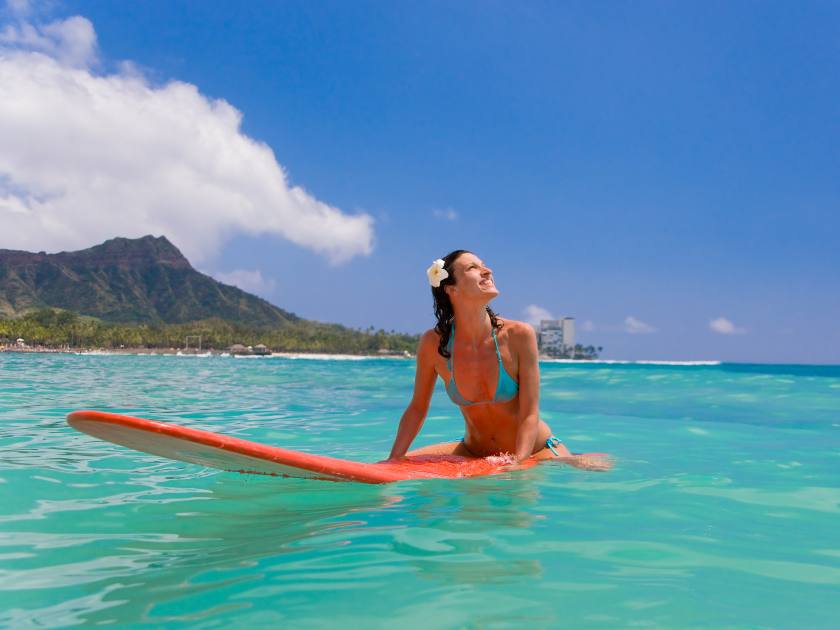
Initial surfing challenges
For beginners stepping onto the board for the first time, the initial surfing challenges often revolve around mastering the basics of paddling and finding equilibrium while balancing on the board. Paddling efficiently is the foundation of successful wave-catching, requiring newcomers to hone their techniques for navigating the open waters. Additionally, catching small waves serves as an introductory yet crucial skill, providing beginners with the opportunity to experience the thrill of riding the ocean’s energy.
Progression milestones
Achieving a standing position on the surfboard is a pivotal moment, signifying the transition from prone paddling to upright riding. Subsequently, riding white water and small waves becomes a natural progression, allowing beginners to build confidence and stability in various conditions. The introduction to turning techniques adds an exciting dimension to their skill set, enabling surfers to navigate the waves with increased control and style.
Common mistakes and how to overcome them
The learning process is not without its share of common mistakes, and acknowledging these challenges is an integral part of a beginner’s surfing journey. Falling off the board is a familiar occurrence, but understanding how to navigate wipeouts and safely remount the board is crucial for progression. Moreover, perfecting positioning on the wave presents its own set of challenges, as beginners learn to read and anticipate the ocean’s movements. Overcoming these common hurdles requires patience, practice, and a willingness to learn from each experience, ultimately contributing to the development of a well-rounded and resilient surfer.
Importance of Surfing Lessons for Beginners
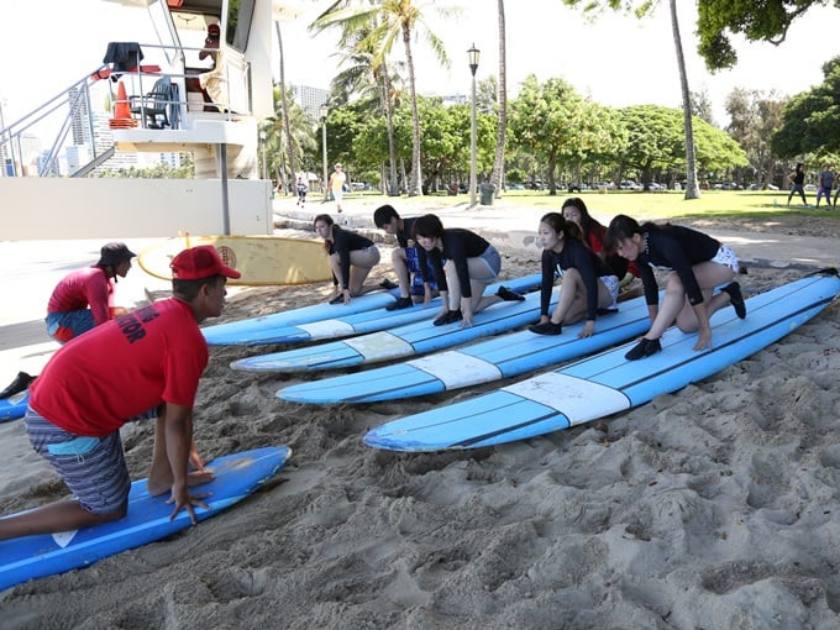
Learning to surf can be a daunting experience for beginners. Professional surfing lessons are thus vital in navigating this challenge. They provide structured learning experiences, ensuring that beginners grasp the fundamental techniques and safety protocols necessary to ride the waves confidently. Instructors provide real-time feedback, rectify errors, and reinforce proper techniques which accelerates learning and minimizes the risk of injury. Additionally, they impart knowledge about wave patterns, etiquette, and local surf conditions – valuable insights that only an experienced eye can offer. Waikiki has numerous reputable surf schools offering lessons tailored for beginners, making it an ideal location to embark on your surfing journey.
Learn More: What to Expect in Your First Surf Lesson in Waikiki
Safety Tips for Surfing in Waikiki
- Always warm up and stretch before hitting the waves to avoid injuries.
- Never surf alone, especially as a beginner. It’s safer to surf with a buddy or in designated surfing areas where lifeguards are present.
- Respect the rules of the surf, including the right-of-way rules, to avoid collisions with other surfers.
- Regularly check surf forecasts and avoid going out when conditions are beyond your skill level.
- Always wear a leash to stay connected to your surfboard. In case of a wipeout, your board is your lifesaver.
- Protect your skin from the intense Hawaiian sun by applying water-resistant and reef-safe sunscreen with a high SPF.
- Stay hydrated and take breaks when needed. Surfing is a physically demanding sport and requires a lot of energy.
Best Time to Surf in Waikiki
Waikiki provides surf-friendly conditions year-round, making it perfect for learners at any time. However, to catch the best waves, it’s essential to understand the seasonal variations. The summer months, from May to October, bring south swells and warmer waters, making it an ideal time for beginners. The waves tend to be smaller and more manageable, perfect for learning and refining surfing techniques. On the other hand, the winter months, from November to April, bring larger north swells, offering a thrilling challenge for more experienced surfers. Irrespective of the season, early morning is generally the best time to surf in Waikiki, as the winds are calmer and the crowds thinner.
Savor the Joy of Riding the Waves in One of the Most Iconic Surf Destinations in the World!
For those contemplating the leap into surfing, especially in the picturesque setting of Waikiki, now is the time to seize the opportunity. The gentle waves, supportive community, and professional instructors make Waikiki an ideal location for beginners to embrace the excitement. Surfing is not just a sport but a lifestyle that embraces harmony with nature and self-improvement. Remember, every surfer started where you are today, and with dedication, the ocean’s rewards are limitless. Enjoy the ride!


